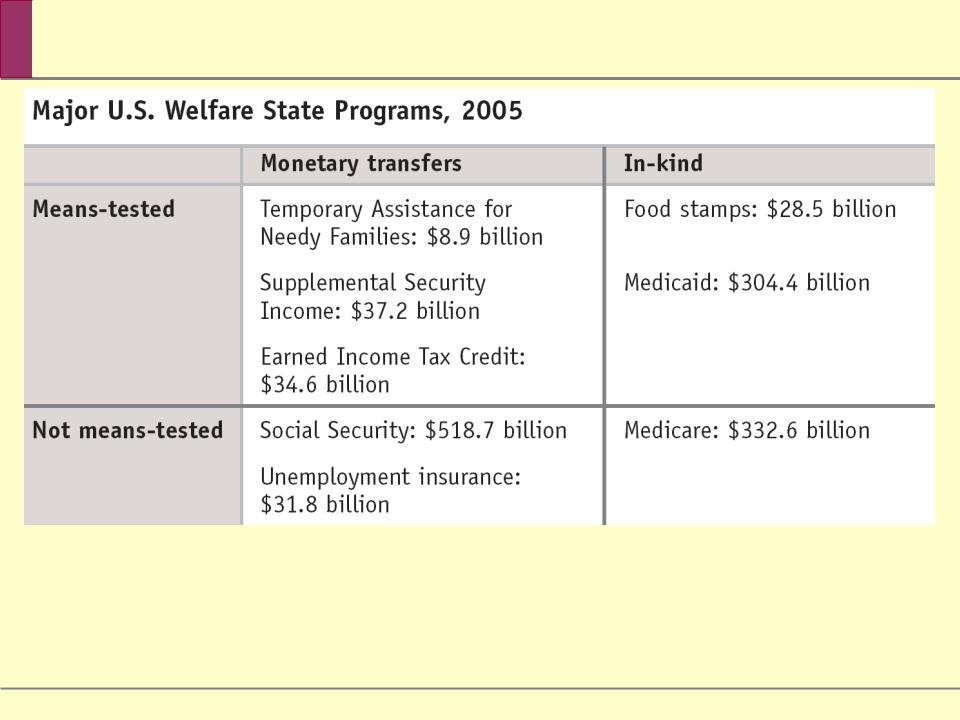
Lectures_micro / Microeconomics_presentation_Chapter_19
.pdf

 Who Are the Poor?
Who Are the Poor?
Female-headed families with no husband present had a very high poverty rate: 30.5%.
Married couples were much less likely to be poor, with a poverty rate of only 4.9%; still, about 38% of poor families were married couples.


 What Causes Poverty?
What Causes Poverty?
Lack of education
83% “college premium” (2006)
Lack of proficiency in English
Racial and gender discrimination
Bad luck


 Consequences of Poverty
Consequences of Poverty
The consequences of poverty include: lack of access to health care
lack of access to affordable housing learning disabilities
Children raised in severe poverty tend to suffer from lifelong learning disabilities.


 Consequences of Poverty
Consequences of Poverty
Poverty is self-perpetuating.
The children of the poor start at such a disadvantage relative to other Americans that it’s very hard for them to achieve a better life.


 Economic Inequality
Economic Inequality
Mean household income is the average income across all households.
Median household income is the income of the household lying at the exact middle of the income distribution.


 Economic Inequality
Economic Inequality
Income in the United States is quite unequally distributed.
The average income of the poorest fifth of families is less than a quarter of the average income of families in the middle.
The richest fifth have an average income more than three times that of families in the middle.
The incomes of the richest fifth of the population are, on average, about 15 times as high as those of the poorest fifth.
The distribution of income in America has become more unequal since 1980.


 Economic Inequality
Economic Inequality
The Gini coefficient is a number that summarizes a country’s level of income inequality based on how unequally income is distributed across quintiles.

Income Inequality Around the World


 The U.S. Welfare State
The U.S. Welfare State


 The U.S. Welfare State
The U.S. Welfare State
A means-tested program is a program available only to individuals or families whose incomes fall below a certain level.
Social Security, the largest program in the U.S. welfare state, is a non-means-tested program that provides retirement income for the elderly. It provides a significant share of the income of most elderly Americans.
Unemployment insurance is also a key social insurance program.
